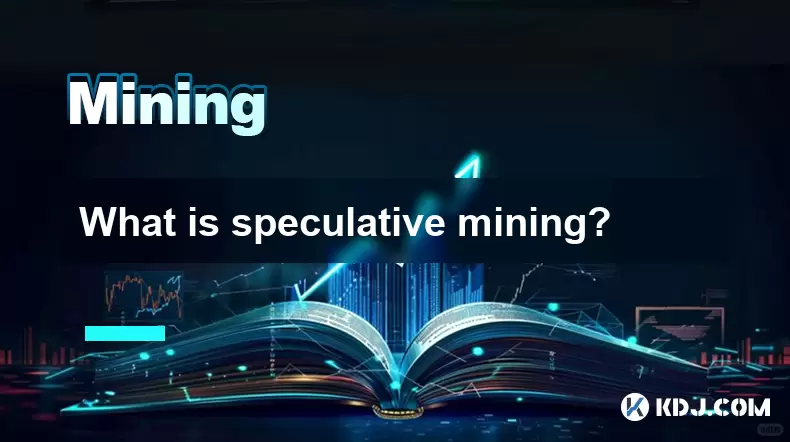-
 Bitcoin
Bitcoin $118,209.3536
1.16% -
 Ethereum
Ethereum $3,151.7546
5.98% -
 XRP
XRP $2.9277
2.35% -
 Tether USDt
Tether USDt $1.0000
0.00% -
 BNB
BNB $689.7099
1.26% -
 Solana
Solana $163.4270
1.91% -
 USDC
USDC $1.0000
0.02% -
 Dogecoin
Dogecoin $0.1983
3.74% -
 TRON
TRON $0.3008
0.51% -
 Cardano
Cardano $0.7435
2.86% -
 Hyperliquid
Hyperliquid $47.6547
-0.48% -
 Stellar
Stellar $0.4625
2.79% -
 Sui
Sui $3.9921
2.71% -
 Chainlink
Chainlink $16.0608
4.23% -
 Hedera
Hedera $0.2348
1.56% -
 Bitcoin Cash
Bitcoin Cash $496.6985
1.25% -
 Avalanche
Avalanche $21.9038
5.41% -
 UNUS SED LEO
UNUS SED LEO $8.8356
-1.88% -
 Shiba Inu
Shiba Inu $0.0...01364
5.31% -
 Toncoin
Toncoin $3.1102
4.35% -
 Litecoin
Litecoin $95.9756
3.59% -
 Polkadot
Polkadot $4.0925
5.78% -
 Monero
Monero $333.7622
-1.44% -
 Uniswap
Uniswap $9.1968
2.25% -
 Bitget Token
Bitget Token $4.6378
6.23% -
 Pepe
Pepe $0.0...01282
6.77% -
 Dai
Dai $1.0002
0.03% -
 Ethena USDe
Ethena USDe $1.0005
0.00% -
 Aave
Aave $329.9143
4.49% -
 Bittensor
Bittensor $441.4995
6.89%
What is speculative mining?
Speculative mining involves mining lesser-known cryptocurrencies for potential high returns, leveraging early access and market volatility.
Jul 16, 2025 at 12:43 pm

Understanding the Concept of Speculative Mining
Speculative mining refers to a practice in the cryptocurrency space where miners or investors allocate computational resources to mine coins that are not yet widely adopted, highly volatile, or have uncertain future value. Unlike traditional mining, which focuses on well-established cryptocurrencies like Bitcoin or Ethereum, speculative mining involves mining altcoins with the hope of significant returns if the coin gains traction or market demand increases.
This approach is often driven by the potential for high rewards, especially when a newly launched blockchain or token experiences rapid price appreciation shortly after launch. Miners who engage in speculative mining typically switch between different blockchains or mine obscure projects before they become mainstream.
Speculative mining can be considered a hybrid strategy combining technical mining operations with investment speculation.
How Does Speculative Mining Work?
The mechanics behind speculative mining involve identifying promising but under-the-radar cryptocurrencies and mining them early. Here's how it generally works:
- Identifying low-difficulty chains: Miners look for new or less popular blockchains with relatively low mining difficulty.
- Early access advantage: By mining these coins early, miners can accumulate a large supply before the public becomes aware.
- Switching pools or algorithms: Some miners use multi-algorithm rigs or switch mining pools frequently to target the most profitable speculative opportunities.
- Holding or selling post-mining: Depending on market conditions and perceived value, miners either hold the mined tokens or sell them quickly for profit.
Miners may also join small communities or follow social media channels to discover upcoming forks or new coins with potential.
Timing plays a crucial role in speculative mining, as delays can result in missed opportunities or losses due to volatility.
Tools and Platforms Used in Speculative Mining
To engage in speculative mining effectively, certain tools and platforms are essential:
- Mining software compatibility: Software such as NiceHash, Claymore’s Dual Miner, or PhoenixMiner allows users to mine multiple algorithms and switch between them easily.
- Mining pools for lesser-known coins: Joining pools like MiningPoolHub, Zpool, or Ahash enables miners to earn rewards from obscure or newer cryptocurrencies.
- Wallets for storing speculative coins: Since many of these coins aren’t listed on major exchanges, miners need secure wallets—often custom-developed for specific blockchains.
- Monitoring tools: Platforms like WhatToMine or Coinwarz help compare profitability across different coins and algorithms.
Some miners also use auto-switching services that automatically direct hashing power to the most profitable coin at any given time based on current market data.
Choosing the right combination of mining software and pool can significantly impact profitability in speculative mining scenarios.
Risks Associated with Speculative Mining
While the potential for high returns exists, speculative mining carries several risks:
- Market volatility: Many speculative coins experience extreme price swings, sometimes dropping to zero within days.
- Security concerns: New blockchains may lack robust security features, making them vulnerable to attacks or exploits.
- Scams and rug pulls: Some projects associated with speculative coins are scams designed to attract early miners and then disappear.
- Technical instability: Mining software or wallets for new coins may be buggy or unsupported, leading to loss of mined assets.
- Regulatory uncertainty: The legal status of some speculative coins remains unclear, potentially exposing miners to compliance issues.
These risks make speculative mining unsuitable for risk-averse individuals or those without a strong understanding of blockchain technology and market dynamics.
Due diligence is critical before investing time and hardware into mining any speculative cryptocurrency.
Getting Started with Speculative Mining: A Step-by-Step Guide
For those interested in exploring speculative mining, here’s a detailed guide to get started:
- Research emerging coins and forks: Follow crypto forums, Reddit threads, and Twitter accounts dedicated to announcing new coins or forks.
- Choose compatible mining hardware: Ensure your GPU or ASIC setup supports the algorithm used by the target blockchain (e.g., Ethash, KawPow, SHA-256).
- Download and configure mining software: Install mining software that supports multiple algorithms and configure it according to the coin’s specifications.
- Join a suitable mining pool: Register with a pool that offers payouts in the speculative coin you're targeting.
- Set up a secure wallet: Use a trusted wallet that supports the coin—preferably a cold wallet if holding long-term.
- Monitor profitability and switch when necessary: Keep track of hash rate, payout frequency, and market prices to decide whether to continue mining or pivot to another coin.
Each step requires careful planning and execution to maximize potential gains while minimizing exposure to risks.
Staying informed and adaptable is key to navigating the fast-paced world of speculative mining.
Frequently Asked Questions About Speculative Mining
Q: Can I speculate mine using ASIC miners?
Yes, but only if the targeted coin uses an algorithm supported by your ASIC model. For example, SHA-256 ASICs can mine Bitcoin-based forks, but cannot mine Ethash-based coins.
Q: Is speculative mining legal?
In most jurisdictions, mining itself is legal, but the legality depends on the specific coin being mined. If the coin is associated with illegal activity or violates local financial regulations, mining it could pose legal risks.
Q: How do I know when to stop mining a speculative coin?
Signs include declining profitability, increasing difficulty, disappearing community support, or negative news about the project. Monitoring forums and exchange listings helps determine exit timing.
Q: Are there tax implications for speculative mining profits?
Yes, in many countries, mined cryptocurrency is considered taxable income. It's important to keep records of mined amounts and their value at the time of receipt for reporting purposes.
Disclaimer:info@kdj.com
The information provided is not trading advice. kdj.com does not assume any responsibility for any investments made based on the information provided in this article. Cryptocurrencies are highly volatile and it is highly recommended that you invest with caution after thorough research!
If you believe that the content used on this website infringes your copyright, please contact us immediately (info@kdj.com) and we will delete it promptly.
- Eclipse Airdrop and Token Supply: Navigating the Crypto Landscape
- 2025-07-16 18:50:13
- Solana Price, Zebec Network, and Remittix: Decoding the Crypto Signals
- 2025-07-16 18:30:13
- Crypto Picks & Altcoin Breakout: August's Hottest Trends
- 2025-07-16 18:30:13
- XLM Stellar Analyst Prediction: Is a $10 Target on the Horizon?
- 2025-07-16 19:10:12
- Dubai, Ripple, and Tokenization: A New Era for Real Estate
- 2025-07-16 18:50:13
- Unilabs Finance (UNIL): Primed for a Massive 2025 Launch?
- 2025-07-16 19:15:12
Related knowledge

How are crypto mining profits taxed?
Jul 14,2025 at 12:28am
Understanding Cryptocurrency Mining and TaxationCryptocurrency mining involves validating transactions on a blockchain network and earning rewards in ...

How to keep a mining rig cool
Jul 12,2025 at 01:42pm
Understanding the Importance of Cooling in Mining RigsCryptocurrency mining is an intensive process that places heavy demand on hardware components, p...

How to mine crypto on a gaming PC
Jul 16,2025 at 12:00pm
What is Crypto Mining on a Gaming PC?Crypto mining involves using your computer's processing power to validate transactions on a blockchain network. A...

How to set up a crypto miner
Jul 16,2025 at 09:14am
Understanding Ethereum Gas Fees: What Are They and How Do They Work?Ethereum gas fees are a fundamental aspect of the network, representing the cost r...

Can you mine crypto on a laptop?
Jul 16,2025 at 02:21am
Is It Feasible to Mine Cryptocurrency on a Laptop?Mining cryptocurrency on a laptop is technically possible, but feasibility depends heavily on the ha...

Is crypto mining worth it?
Jul 16,2025 at 01:21am
Understanding the Basics of Crypto MiningCrypto mining refers to the process of validating transactions on a blockchain network by solving complex mat...

How are crypto mining profits taxed?
Jul 14,2025 at 12:28am
Understanding Cryptocurrency Mining and TaxationCryptocurrency mining involves validating transactions on a blockchain network and earning rewards in ...

How to keep a mining rig cool
Jul 12,2025 at 01:42pm
Understanding the Importance of Cooling in Mining RigsCryptocurrency mining is an intensive process that places heavy demand on hardware components, p...

How to mine crypto on a gaming PC
Jul 16,2025 at 12:00pm
What is Crypto Mining on a Gaming PC?Crypto mining involves using your computer's processing power to validate transactions on a blockchain network. A...

How to set up a crypto miner
Jul 16,2025 at 09:14am
Understanding Ethereum Gas Fees: What Are They and How Do They Work?Ethereum gas fees are a fundamental aspect of the network, representing the cost r...

Can you mine crypto on a laptop?
Jul 16,2025 at 02:21am
Is It Feasible to Mine Cryptocurrency on a Laptop?Mining cryptocurrency on a laptop is technically possible, but feasibility depends heavily on the ha...

Is crypto mining worth it?
Jul 16,2025 at 01:21am
Understanding the Basics of Crypto MiningCrypto mining refers to the process of validating transactions on a blockchain network by solving complex mat...
See all articles

























































































